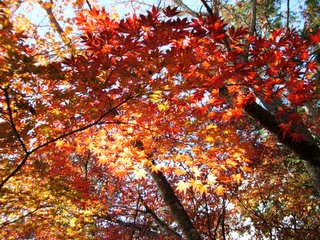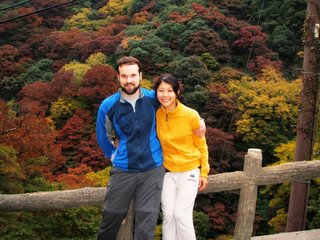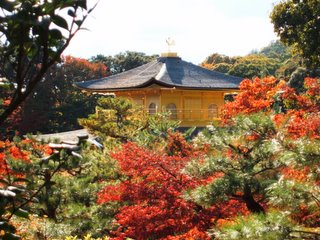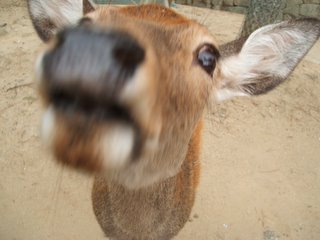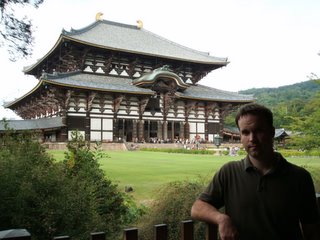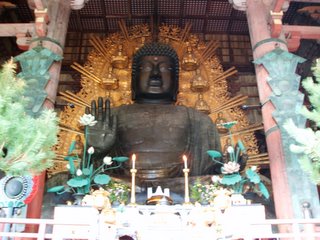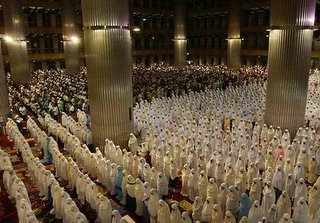
We took a trip to Tokyo- my first- and it was great!! With all due respect to Bill Murray, one of the best actors to date, Tokyo is an excellent destination. As my friend Chuck pointed out, anybody with his character’s lack of enthusiasm and bleakness while in a world renowned international city is simply a dull individual. Of course the crowds are huge- it’s Japan! Every city in the country is a New Years Eve at Time Square!
We took a too short, three day excursion to Japan’s modern capitol. Despite a population of 12 million, it was remarkably clean. Granted, we couldn’t get to all areas but the ones featured on Lost were really fun.
First on my list of places to go was the Tokyo Mosque. It was beautiful, the most amazing place I have ever had the Blessing of quietly stepping into. Tsugumi and I were wholly in awe. Again, Allah’s gift of the human capacity for creativity and exquis
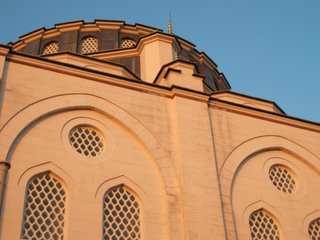 iteness was undeni-ably obvious. Fashi-oned after the Blue Mosque of Istan-bul, it also houses a Turkish cultural center and study hall where visitors and parishioners alike are welcomed with a smile and sweet warm tea. Flipping through the photo books of the Turkish landscape captured our interest as a possible landing for our spring travels, insha’Allah.
iteness was undeni-ably obvious. Fashi-oned after the Blue Mosque of Istan-bul, it also houses a Turkish cultural center and study hall where visitors and parishioners alike are welcomed with a smile and sweet warm tea. Flipping through the photo books of the Turkish landscape captured our interest as a possible landing for our spring travels, insha’Allah. 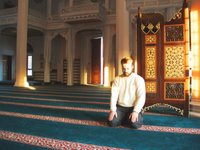 Though we only planned to stop in for a short while and make Asr, the afternoon prayer, we remained for several hours which quickly passed.
Though we only planned to stop in for a short while and make Asr, the afternoon prayer, we remained for several hours which quickly passed.Listening to the Athan, calling people to prayer, resound inside
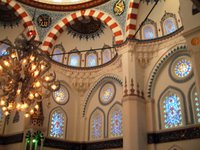 the dome of the mosque was like the song of a nightingale at sunset. Following Maghrib, even- ing prayer, we made our way to a nice little soba shop in Ueno for dinner.
the dome of the mosque was like the song of a nightingale at sunset. Following Maghrib, even- ing prayer, we made our way to a nice little soba shop in Ueno for dinner.The next day, we rented bicycles and toured around much of the central district. When the bike keeper presented us with motorized mamacherries for 500 yen each we were more than excited. (By the way, mama charies are bicycles, reminiscent of the one that the Wicked Witch of the West rode in The Wizard of Oz. They’re commonly ridden in Japan by everyone from the guy in a business suit to a mom with a baby in the front basket and her husband sitting on the back rack with a dog in his lap- yes, I’ve seen it happen.) Though initially enthused about the motorized bicycles, I have to admit, they’re not worth their weight. The battery pack was short lived and only gave a small boost as we went up hills. It would have been just as easy without the motor boost as it was with it. Plus, on the way back, we had to turn them on in order to activate the headlights. Live and learn. Anyway, we were able to get around to quite a few places this way.
We started out by going around the Kokyo Imperial Palace where the royal family resides.
 The buildings are hidden from view by a mass of greenery along with a mote which encircles the perimeter, beside a wall composed of huge stones- commonly used to fortify Japanese castles. We later hit the business districts where ballpoint pens can cost several hundred dollars each.
The buildings are hidden from view by a mass of greenery along with a mote which encircles the perimeter, beside a wall composed of huge stones- commonly used to fortify Japanese castles. We later hit the business districts where ballpoint pens can cost several hundred dollars each. After returning the bikes, we took a ride on a great rollercoaster! That was also a first for me. Previously, I hadn’t been on anything bigger than that which the carnivals tote around the fair- grounds every year. It was really a thrill. They built it on top of a shopping mall so it was already three stories up. As it was night time, I was able to convince Tsugumi of the beautiful view that it would offer. Once we were strapped in, I think the view lasted a few seconds just before we made what seemed to be a vertical plunge into darkness at 80 mph. I have to admit, as we were headed down, I was having second thoughts but when it was all said and done, I would have liked to have given it a second round.
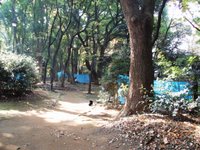 Our last day, we spent mostly at Ueno park. There were many sites to be taken in. The park itself is home to three museums and a few shrines, not to mention, numerous blue tarps set up by the homeless who reside in the wooded areas. We were detracted away from the museums by the huge lines of people waiting at the ticket counters. I once saw a line of about three thousand waiting to see a Van Gough exhibit- which I chose to exchange for breathing space. We did make it the Toshogu shrine, built in 1627.
Our last day, we spent mostly at Ueno park. There were many sites to be taken in. The park itself is home to three museums and a few shrines, not to mention, numerous blue tarps set up by the homeless who reside in the wooded areas. We were detracted away from the museums by the huge lines of people waiting at the ticket counters. I once saw a line of about three thousand waiting to see a Van Gough exhibit- which I chose to exchange for breathing space. We did make it the Toshogu shrine, built in 1627. 
It is a humble structure, unlike most, and has survived through earthquakes, battles, and somehow managed to be spared by the carpet bombings of WWII. Painted in deep shades of red and gold, it doesn’t appear to have ever been restored or manipulated, except for the flooring. Inside, there are a number of artifacts displayed in rooms of peeling murals. I imagined a time when the autocrats sat on the tatami, sipping tea. I presume that if they ever knew me, a commoner and foreigner at that, were roaming around the shogun’s quarters, it would send them rolling in their graves.
Our plane didn’t depart until 19:30 so we were able to stop by Sensoji, close to our hotel.
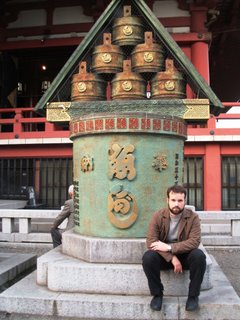 Sensoji is Tokyo’s oldest temple, built in 645 CE. It’s a very popular site so there were throngs of people, mostly along the 200 meter pathway, lined with food and trinket stands, leading to the temple entrance. There was a quaint hat shop half way in where I found a beautiful, burnt orange hat for Tsugumi. Hats made in Japan are of excellent quality, handmade design though can be ridiculously expensive. The winter chill was beginning to set in so once we took in the scenery, we headed back to the hotel to gather our bags and make our way home.
Sensoji is Tokyo’s oldest temple, built in 645 CE. It’s a very popular site so there were throngs of people, mostly along the 200 meter pathway, lined with food and trinket stands, leading to the temple entrance. There was a quaint hat shop half way in where I found a beautiful, burnt orange hat for Tsugumi. Hats made in Japan are of excellent quality, handmade design though can be ridiculously expensive. The winter chill was beginning to set in so once we took in the scenery, we headed back to the hotel to gather our bags and make our way home.Besides the Tokyo Mosque and the other things I mentioned, one of the greatest treats was hitting up the veggie lunch buffets and organic markets.
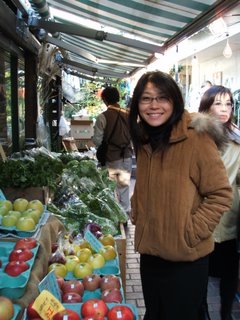
Tsugumi looked up several places; we made it to three (our bellies can only take in so much, you know. Consequently, we only ate dinner only once!) Two of the places we went to were Japanese: Mother’s and the Crayon House; the other was Nataraj, an Indian spot. The food was sooo good! Kansai is really lacking in the vegetarian arena so finding such a great selection in Tokyo was really refreshing. Plus, we didn’t pay more than 1200 yen at any of them- super cheap by Japanese standards. We went to one buffet in Osaka where I could hardly eat a thing- though what I did find, I could eat till my heart’s content- and spent 2300 per person.
Bottom line: Lost in Translation is way off. Tokyo is a must see, must visit, kind of place. What’s more, I guarantee, you’ll never see cleaner subway seats in any other city in the world- except, maybe Singapore where they fine gum chewers and cane vandals- not a bad idea if you’ve ever been on a subway or bus in the States.
